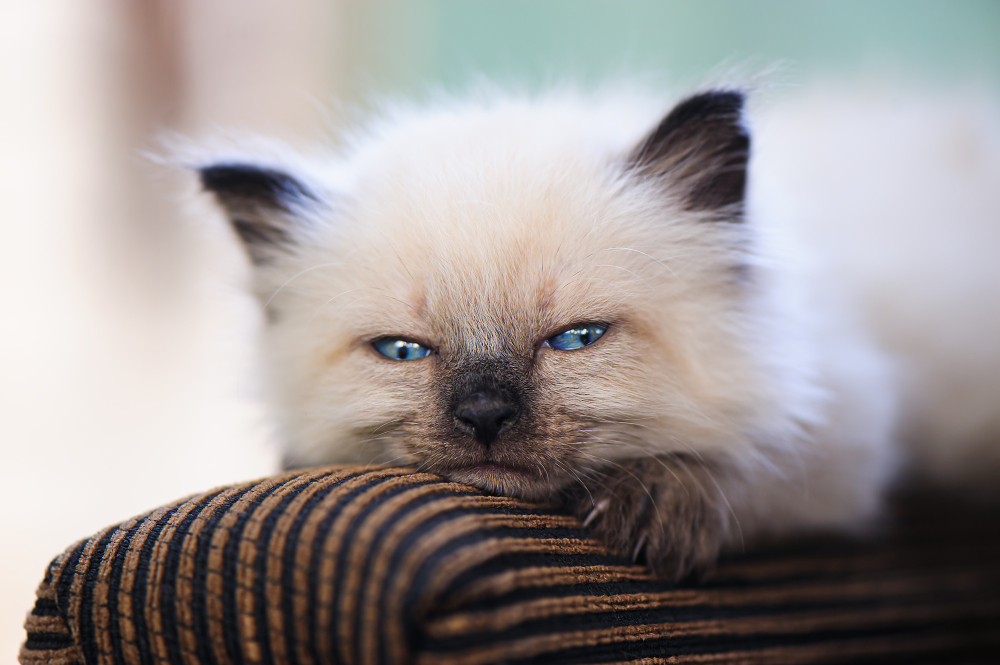The journey of a kitten from birth is filled with numerous milestones, from their first steps to the fascinating change in eye color. Observing these changes can be a delightful experience for cat owners and animal enthusiasts alike. Kittens are born with their eyes closed, and it takes about seven to fourteen days before they first experience the world visually. Initially, their eyes are a deep blue, but this is not their permanent color. The transformation that follows is not just a sign of growth but a window into the genetic marvel that shapes their ultimate appearance.
Early Stages of Visual Development
When kittens first open their eyes, their vision is blurry, and their initial eye color is a uniform blue. This is due to the lack of melanin, a pigment that gives color to the eyes, skin, and fur. The blue hue is a result of light scattering in the transparent outer layer of the developing eye. During these early stages, a kitten’s eyes are particularly sensitive to light, and their primary focus is learning to navigate their immediate environment.
The Transition Begins
Typically, by the third week, the first signs of color change can be observed. This period marks the beginning of melanin production in the iris, gradually altering the eye color. It’s a slow process, and the final color can take several weeks to emerge fully. This change is not just a cosmetic alteration but an essential development that affects how they perceive their surroundings.
Genetics at Play
The ultimate eye color of a kitten is determined by genetics. The most common colors are various shades of green, yellow, amber, or orange. Less commonly, cats may retain blue eyes or even have heterochromia — a condition where each eye is a different color. The specific gene responsible for eye color is also linked to coat color, which is why certain breeds or colors of cats are more likely to have specific eye colors.
Understanding the Timeline
The timeline for when kittens’ eyes change color varies, but most will start to show their true color from around 5 to 8 weeks of age. However, the full richness and depth of the color might not be completely settled until they are around 3 to 6 months old. During this period, it’s fascinating to watch the gradual shift, as the eyes tell a story of growth and genetic heritage unfolding.
Breeds and Eye Color
Certain cat breeds are known for retaining their blue eyes into adulthood. These include Siamese, Ragdoll, and other breeds with a pointed coat pattern, where the lighter body is contrasted by darker colors on the ears, face, paws, and tail. In these breeds, the blue eye color is linked to the gene responsible for their distinctive coat pattern. However, for the vast majority of cats, the shift from blue to another color is a natural part of their development.
Health Considerations
While the change in eye color is a normal part of growth, it’s essential to monitor this progress for any signs of health issues. Consistent or drastic changes in eye color beyond the expected age can sometimes indicate health problems. If a kitten’s eyes are cloudy, if there’s discharge, or if any sudden changes in eye color occur, it’s crucial to consult a veterinarian. Healthy eyes are a vital part of a cat’s well-being, and attentive care can ensure they remain a window to a vibrant world.
A Glimpse into Maturity
The transition in eye color is one of the many aspects that mark a kitten’s journey to adulthood. It’s a process filled with changes and development that prepare them for a full and active life. For cat owners, understanding and witnessing these changes can deepen the bond with their furry companions, offering insight into their health and unique characteristics. As kittens grow and their eyes settle into their final color, they reveal a part of their identity, adding to the myriad of reasons cats are cherished pets worldwide. Watching a kitten’s eyes change color is just one of the many joys of sharing life with these enigmatic and endearing animals.
